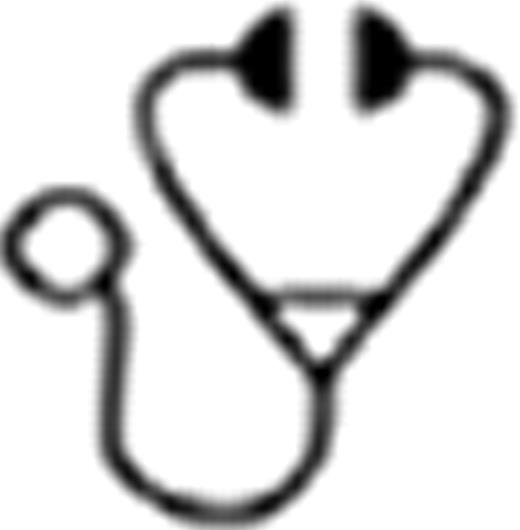Abstract
Background. IFN-alpha (IFN) is reported to induce molecular response in patients with chronic myeloproliferative neoplasms and may therefore improve survival. However, the use of conventional and pegylated IFNs is limited by toxicity, leading to treatment withdrawals in a substantial proportion of patients. In polycythemia vera (PV), recently published phase II data indicate occurence of grade 3 and 4 toxicities in 20%, and toxicity-related discontinuations in 22–24% of patients administered once weekly with pegylated IFNs. Results from large-scale randomized studies of IFNs in PV are not available. AOP2014 is a next generation long-acting IFNa-2b, consisting predominantly of only one isoform as opposed to other commercially available pegylated interferons. AOP2014 is expected to have pharmacokinetic and pharmacodynamic profiles which may allow a reduced dosing frequency compared to other pegylated IFNs, potentially leading to improved tolerability, better compliance, and, finally, favourable long-term treatment outcomes.
Study design. This is an open-label, prospective, multicentre, phase I/II dose escalation study of AOP2014 to determine the maximum tolerated dose (MTD), safety and efficacy in PV. Inclusion criteria are: age ≥18 years, confirmed diagnosis of PV (WHO, 2008, or the PSVG plus JAK2 positivity). Both newly diagnosed and pre-treated (cytoreduction) patients are eligible; hydroxyurea (HU) is allowed until the first application of AOP2014. If abnormally elevated prior to entry, sustained hematocrit (Hct) ≤45% is to be achieved by phlebotomy prior to the first administration. 3+3 dose escalation with cohort extension after MTD definition is being utilized. Intra-patient dose escalation to the dose level, previously established to be safe, is encouraged. MTD is defined as the highest dose level at which no more than 1 of 6 subjects experience a DLT during the first treatment period (2 weeks). Complete hematological response (CR) is defined by Hct <45%, platelet count ≤400*109/L, WBC count ≤10*109/L, normal spleen size, and absence of thromboembolic events. Partial response (PR) is defined as haematocrit <45% without phlebotomy but with persistent splenomegaly or elevated (>400*109/L) platelet count, or reduction of phlebotomy requirements by at least 50%. Evaluation of toxicities and JAK2 allele burden quantication will be performed.
Results. 20 patients have been included to date, M/F ratio was 16/4, median age 58 years (range 44–83). Median time from diagnosis to inclusion was 19 months (range 0–170). 9 patients were pre-treated with HU prior to study entry. Median number of phlebotomies in the past 3 months prior to inclusion was 1 (range 0–4), a total of 13 patients were regularly phlebotomized at least once in three months prior to study entry. Six patients had a history of thrombotic complications. Median Hct at baseline was 46% in males (range 46–52) and 42% in females (range 41–43). Median WBC and platelet counts were 11.3*109/L (range 4.7–17.8) and 366*109/L (range 148–1016), respectively. Twelve patients (60%) had splenomegaly. Dose levels of 50, 100, 150, 225, 300, 360 and 450 microgramm once in two weeks were investigated. The median reported treatment duration is 24 weeks (range 0–33). After 10 weeks of treatment (14 evaluable patients), 64% of patients had hematological response (2 CR; 7 PR), one patient needed to be phlebotomized. At 18 weeks (9 evaluable patients), 1 patient had CR and 4 – PR, overall response (CR+PR) was 56%; at 28 weeks (8 evaluable patients), 1 patient had CR and 5 PR, overall response was 63%. The only evaluable patient at week 34 had CR. Starting from week 18, no patient required phlebotomy. Mainly grade 1 and 2 adverse events were reported. Administration site reactions developed in 11 patients, all of mild intensity and recovered within 72h. The most frequent adverse reactions were muscle and joint pain and gastrointestinal toxicities (12 and 6 patients, respectively). Fever and depression were observed in 5 and 2 patients, respectively. Drug-related adverse event (depression) was the reason of treatment discontinuation in one patient. Molecular response data are still undergoing evaluation.
Conclusion. Response rate of above 60% at six month already observed in the phase I dose finding part suggests that AOP2014 has promising efficacy and good tolerability profile in PV. Updated results will be presented as the trial progresses.
Gisslinger:AOP Orphan Pharmaceuticals AG: Research Funding, Speakers Bureau; Novartis: Speakers Bureau; Celgene Austria: Research Funding, Speakers Bureau. Kralovics:(7) AOP Orphan Pharmaceuticals AG: Research Funding. Schoder:AOP Orphan Pharmaceuticals AG: Research Funding. Gisslinger:AOP Orphan Pharmaceuticals AG: Research Funding. Buxhofer-Ausch:AOP Orphan Pharmaceuticals AG: Research Funding. Strecker:AOP Orphan Pharmaceuticals AG: Research Funding. Wolf:AOP Orphan Pharmaceuticals AG: Research Funding. Willenbacher:AOP Orphan Pharmaceuticals AG: Research Funding. Greil:AOP Orphan Pharmaceuticals AG: Research Funding. Egle:AOP Orphan Pharmaceuticals AG: Research Funding. Melchardt:AOP Orphan Pharmaceuticals AG: Research Funding. Burgstaller:AOP Orphan Pharmaceuticals AG: Research Funding. Tarmann:AOP Orphan Pharmaceuticals AG: Employment. Wachter:AOP Orphan Pharmaceuticals AG: Employment. Zahriychuk:AOP Orphan Pharmaceuticals AG: Employment. Thaler:AOP Orphan Pharmaceuticals AG: Research Funding.

This icon denotes a clinically relevant abstract
Author notes
Asterisk with author names denotes non-ASH members.

